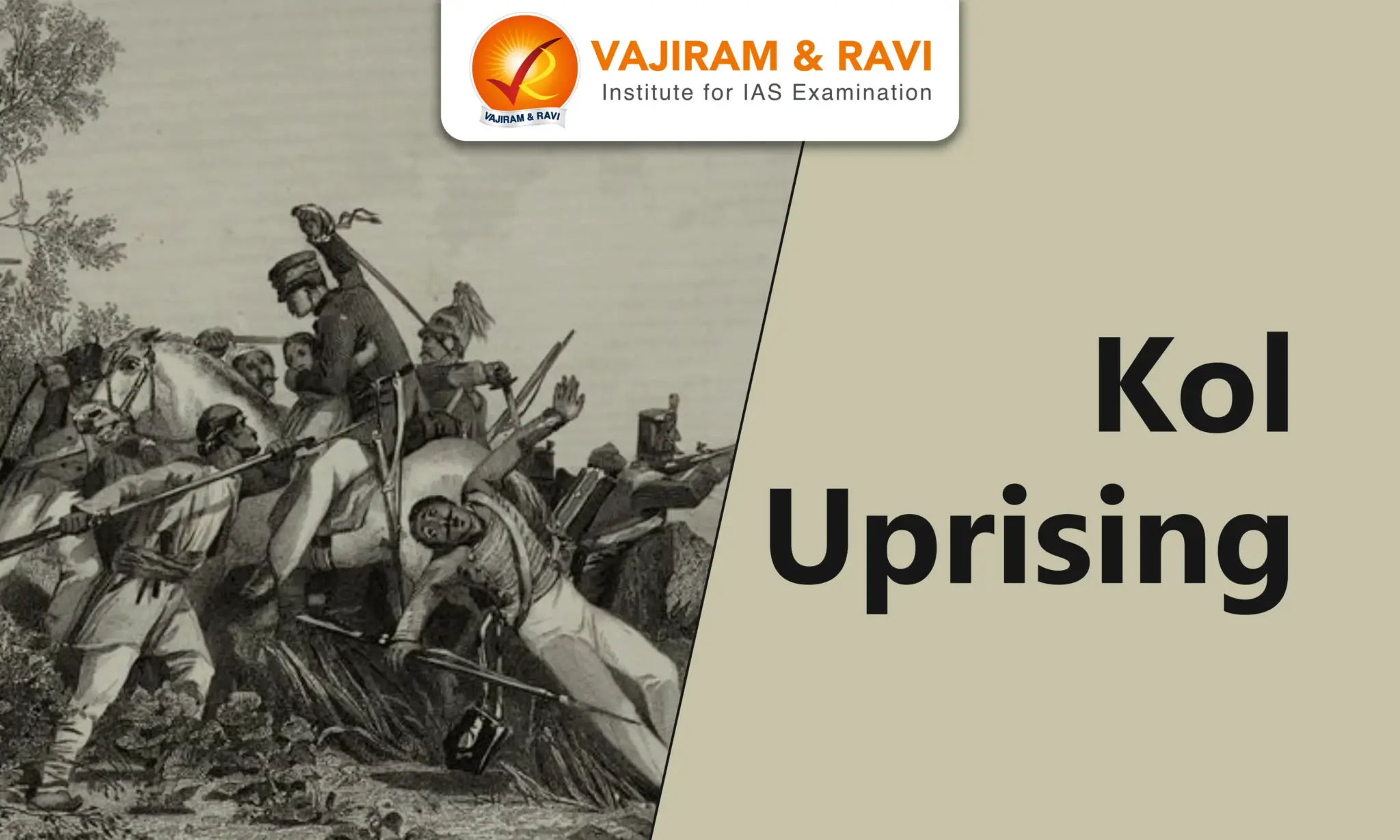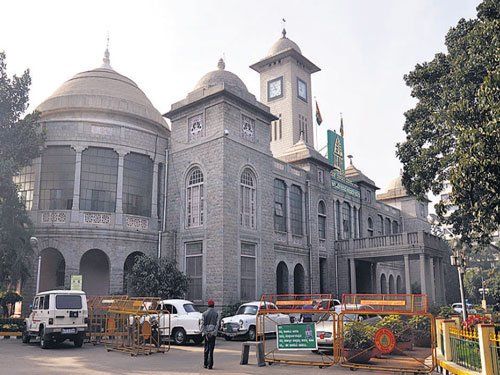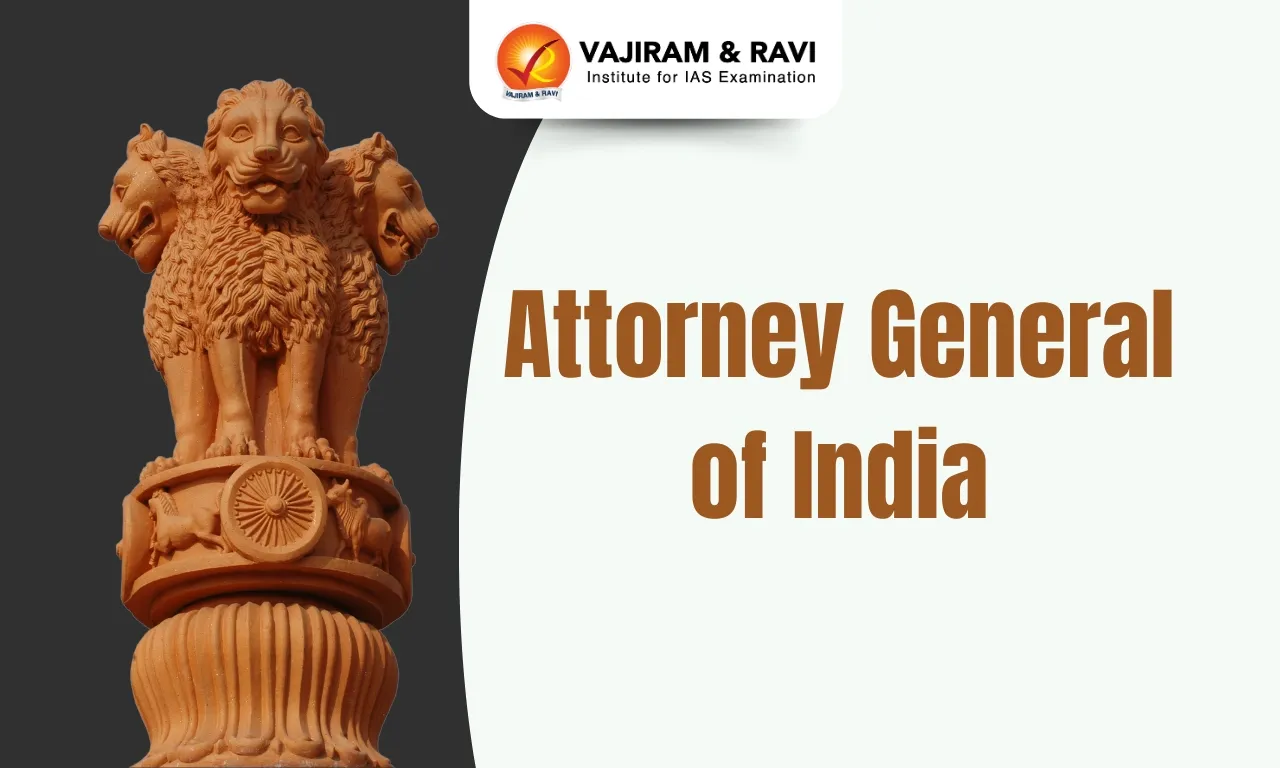The Kol Rebellion, also known as the Kol Uprising, Kol Revolt or the Kol Mutiny, was a significant event in Indian history. The Kol rebellion took place in the late 19th century, between 1831 and 1832. This rebellion, centred in the Chotanagpur plateau region, was a crucial moment in India's tribal populations' ongoing struggle to maintain their identity and autonomy.
The Kols, a tribal community in the area, led the insurgency, which was fuelled by grievances about British policies and oppression by local landlords.
Kol Uprising Background
The Kol Uprising (1831-1832) was one of the earliest tribal revolts against British rule in India. It was rooted in the socio-economic and political changes imposed by the British in the Chhota Nagpur region. The introduction of new land tenure systems and administrative policies disrupted their traditional lifestyle, sparking widespread discontent. Other communities, such as the Mundas, Oraons, and Hos, joined their cause.
- In 1819, a rebellion began after the appointment of a Political Agent in South Bihar.
- Settlers encroached on Adivasi lands, traditionally managed by family units and assemblies.
- Outsiders exploited the Kols, introducing new farming, trade practices, and land rules, further disrupting their way of life.
Who were Kol Tribes?
The Kol tribes, including the Mundas, Oraons, Hos, and Bhumijs, were indigenous people residing in the Chhota Nagpur region. They had a distinct socio-cultural identity and were primarily agrarian, relying on the land for their livelihood.
- The Kol tribes had their traditional systems of governance, with the Munda-Manki system being one of the most prominent. Under this system, the Munda was the head of the village, and the Manki was the head of 15 to 20 villages.
- The Kols had a distinct social structure and governance system and a strong connection to their sacred land. The introduction of British rule and the imposition of foreign laws and practices disrupted their traditional way of life.
Kol Uprising Causes
The Kol Uprising was primarily caused by the encroachment of British colonial rule and the exploitation by local landlords, moneylenders, and merchants. The following factors contributed to the Kol revolt:
- Economic Exploitation: The Kol Uprising was mainly due to the economic exploitation of the tribal communities by the British and non-tribal landlords. The British introduced new land systems, displacing Kols from their lands.
- High rents, taxes, and forced labour worsened their condition, reducing many to bonded labour. Additional taxes and the destruction of their traditional livelihoods added to their suffering.
- Social Oppression: The Kols faced harsh oppression from the British and non-tribal settlers. The arrival of outsiders disrupted their way of life, and they were treated as inferior.
- The British often ignored their problems, siding with non-tribal landlords, which led to resentment and rebellion among the Kols.
- Political Oppression: The British colonial rule weakened the Kols' traditional political system. They replaced the Munda-Manki leaders with corrupt officials and Political Agents, taking away the Kols' role in governing their land.
- This political oppression led to feelings of anger and alienation, pushing the Kols to rebel.
Kol Uprising Events
The Kol Uprising began in late 1831 when the Kol tribes, under the leadership of Budhu Bhagat, Joa Bhagat, and Jhindrai Manki, revolted against the British and non-tribal landlords. The Kol Uprising initially began as a series of localised protests against the Kols' economic and social exploitation. However, it quickly escalated into a full-scale rebellion.
- Kol Uprising Spread: The Kols attacked landlords and zamindars, looting their properties and burning homes. They also targeted non-tribals who they saw as British allies. The revolt spread quickly across the Chhota Nagpur plateau, gaining support from other tribes like the Oraons and Hos.
- British Response: The British initially underestimated the revolt but soon mobilised forces as it grew. The Kols used guerrilla warfare with traditional weapons like bows and arrows against British troops.
- Suppression: In early 1832, British forces, led by Captain Wilkinson, captured key leaders like Budhu Bhagat and Jhindrai Manki, weakening the uprising. By mid-1832, the rebellion was largely crushed, and British historians dismissed it as banditry.
Kol Uprising Consequences
The Kol Uprising was met with brutal suppression by the British, who quickly crushed the rebellion through military action, resulting in the capture or killing of many rebel leaders. In response, the British established the South-West Frontier Agency in 1833 to maintain order and prevent future unrest. Ultimately, the uprising failed to achieve its goals, leading to further land loss and cultural decline for the Kols, as British policies continued to encroach upon tribal lands and impose foreign cultural norms.
Kol Uprising Leadership
The Kol Uprising was marked by the participation of several tribal communities, including the Mundas, Oraons, Hos, and Bhumijs. The leadership of the Kol Uprising was characterised by a mix of traditional tribal leaders and younger, more radical elements.
- Prominent Leaders: The Kol Revolt was led by prominent tribal leaders such as Budhu Bhagat, Joa Bhagat, Madara Mahato and Jhindrai Manki. While the older leaders, such as Budhu Bhagat, sought to preserve the Kols' traditional way of life, the younger leaders were more militant and advocated for a complete break from British rule.
- Support from Other Groups: The Kol Uprising also received support from other marginalised groups, including the Kharwars and Cheros. These groups, like the Kols, had been affected by the British economic and social policies and were eager to join the revolt.
Kol Uprising Significance
The Kol Uprising holds significant historical importance, particularly in the context of tribal resistance against colonial exploitation in India. The Kol Rebellion was one of the earliest large-scale revolts by indigenous communities against British rule, preceding other major uprisings like the Santhal Rebellion (1855) and the Munda Rebellion (1899-1900).
- The Kol Uprising showed tribal communities' frustrations against foreign governance and land systems.
- It highlighted the British's failure to recognise and address the specific social and economic issues faced by these tribes.
- It set a precedent for future tribal rebellions and inspired subsequent generations of tribal leaders to continue the struggle against colonial exploitation.
| Other Related Articles | |
| Birsa Munda | Rani Gaidinliu |
| Munda Rebellion | Kol Uprising |
| Santhal Rebellion | Tribal Movements in India |
Last updated on December, 2025
→ Check out the latest UPSC Syllabus 2026 here.
→ Join Vajiram & Ravi’s Interview Guidance Programme for expert help to crack your final UPSC stage.
→ UPSC Mains Result 2025 is now out.
→ UPSC Notification 2026 is scheduled to be released on January 14, 2026.
→ UPSC Calendar 2026 is released on 15th May, 2025.
→ The UPSC Vacancy 2025 were released 1129, out of which 979 were for UPSC CSE and remaining 150 are for UPSC IFoS.
→ UPSC Prelims 2026 will be conducted on 24th May, 2026 & UPSC Mains 2026 will be conducted on 21st August 2026.
→ The UPSC Selection Process is of 3 stages-Prelims, Mains and Interview.
→ UPSC Result 2024 is released with latest UPSC Marksheet 2024. Check Now!
→ UPSC Prelims Result 2025 is out now for the CSE held on 25 May 2025.
→ UPSC Toppers List 2024 is released now. Shakti Dubey is UPSC AIR 1 2024 Topper.
→ UPSC Prelims Question Paper 2025 and Unofficial Prelims Answer Key 2025 are available now.
→ UPSC Mains Question Paper 2025 is out for Essay, GS 1, 2, 3 & GS 4.
→ UPSC Mains Indian Language Question Paper 2025 is now out.
→ UPSC Mains Optional Question Paper 2025 is now out.
→ Also check Best IAS Coaching in Delhi
Kol Uprising FAQs
Q1. What was the Kol uprising in 1831?+
Q2. Who was the leader of the Kol rebellion?+
Q3. What was the cause of the Kol rebellion?+
Q4. Who are the Kols in Chota Nagpur?+
Q5. Was Sui Munda leader of Kol rebellion?+
Tags: kol uprising quest

















